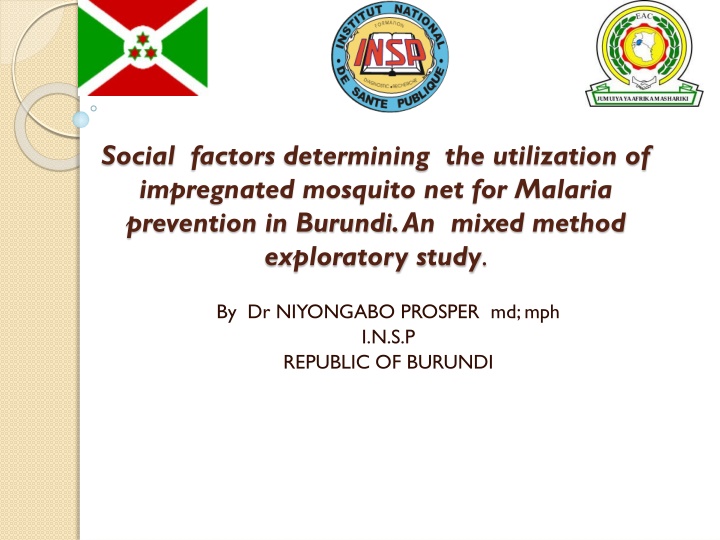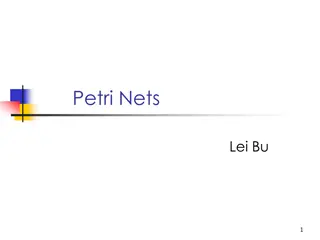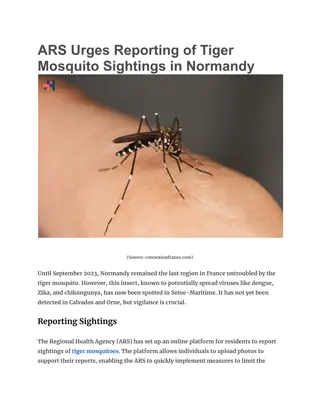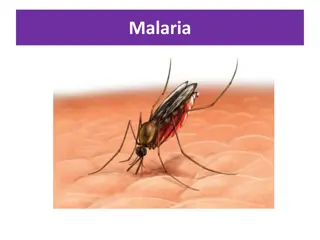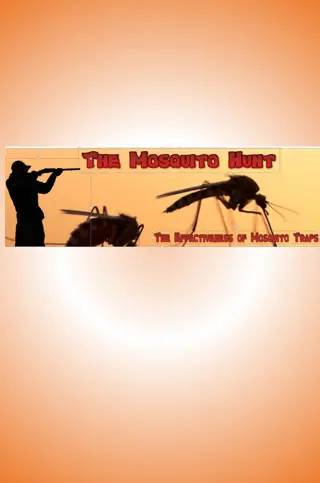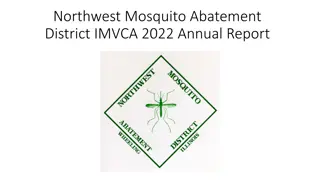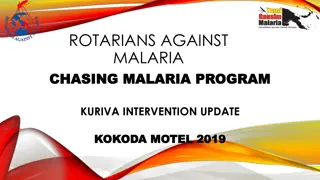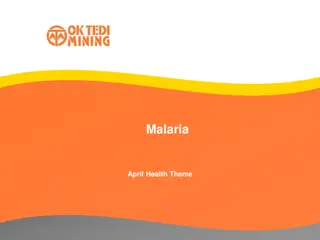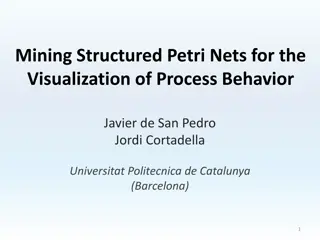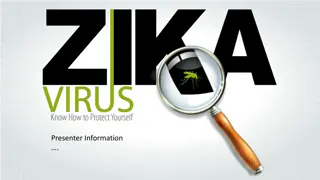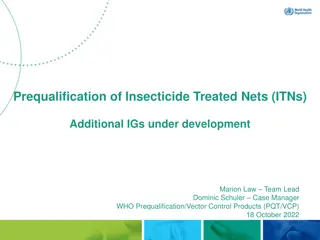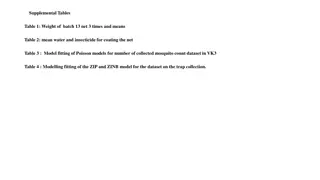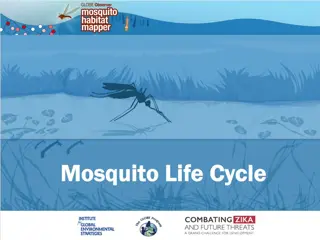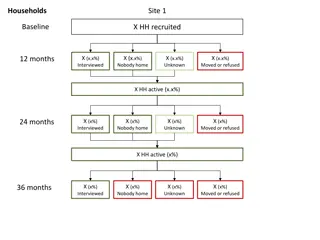Factors Influencing Utilization of Impregnated Mosquito Nets in Burundi
This study by Dr. Niyongabo Prosper explores the social factors affecting the utilization of impregnated mosquito nets for malaria prevention in Burundi. Using a mixed methodology approach, the research delves into the various determinants that influence the uptake of this preventive measure in the Burundian context. The findings aim to provide valuable insights for public health interventions and policy-making processes in combating malaria in the region.
Download Presentation

Please find below an Image/Link to download the presentation.
The content on the website is provided AS IS for your information and personal use only. It may not be sold, licensed, or shared on other websites without obtaining consent from the author.If you encounter any issues during the download, it is possible that the publisher has removed the file from their server.
You are allowed to download the files provided on this website for personal or commercial use, subject to the condition that they are used lawfully. All files are the property of their respective owners.
The content on the website is provided AS IS for your information and personal use only. It may not be sold, licensed, or shared on other websites without obtaining consent from the author.
E N D
Presentation Transcript
Social factors determining the utilization of impregnated mosquito net for Malaria prevention in Burundi. An mixed method exploratory study. By Dr NIYONGABO PROSPER md; mph I.N.S.P REPUBLIC OF BURUNDI
OUTLINE Background Study Objectives Study Methodology Results Discussion Recommendations Acknowledgements
Background Malaria is a major public health problem in Africa Leading cause for morbidity and mortality in Burundi Abuja summit in 2000 and mosquito-net use Need of knowledge regarding factors favoring or hindering the use of mosquito- net in Burundi.
Study objectives To contribute towards increasing the use of impregnated mosquito-net by identifying social enablers or deterring factors To evaluate the population knowledge on Malaria and use of Mosquito nets to prevent its occurrence. To inform policy on how to sustain the use of mosquito-net in Burundi.
Conceptual model Interpersonal behavior theory adapted by Triandis General Context : country history, culture, social habits, tradition, Perceived consequences Perceived social norms Affect Believes on social roles Normative believes Habits Personal normative believes INTENTION Enabling factors Personal identity Behavior
Methods A cross sectional descriptive study integrating open-ended questions in a survey A convenient sample of 2520 households 5 provinces of Burundi Bivariate and multivariate were performed for data analysis.
Study Results:Knowledge on Malaria and mosquitonets 99 % of respondents know Malaria 51,9% recognize fever, headache and fatigue as Malaria symptoms 88% cite at least one sign of Malaria 90,8% recognize bites by Mosquito-nets as the cause of Malaria. For others: hunger ,poor hygiene, cold 99,6% have seen a mosquitonet,100% in Buja
75,3% know the Mosquito-net as a protection against bites of mosquito-nets 55,1% make the link between use of mosquito-net and protection against Malaria Majority use more mosquito-net to avoid disturbance while sleeping than to protect Malaria.(shield bug; stink bugs ) Others report its use for income generating activities (fishing; chicken)
Affect and mosquito-net utilization 60% of respondents had used mosquito-net the night before the survey 45% of people from rural area prefer non white mosquito-nets Majority in Urban area prefer white mosquito-nets 88% of respondents in rural area and 76 % prefer a rectangular mosquito-net 21 % in urban area prefer circular mosquito-nets.
Perceived norms in mosquito-nets utilization 64,9% of respondents would give priority to children for mosquito-net utilization 51,3% would prioritize pregnant women 47.2% of respondents in rural area think that poor and vulnerable people should get also priority to access mosquito-nets.
Sources of information 30.7% receive information from CHW 10.1% get information from media Others: local associations; church; neighbors
Enabling factors Owning a mosquito-net No traditional say or cultural consideration standing against the use of mosquito-net. 48% vs 35% would buy mosquito-net No idea for 17 % Availability of mosquito-net locally CHW trusted by community
Living in a descent house increases the utilization of mosquito-nets House roof Nomber of utilizedmosquitonets 1 2 3 4 5 and more Total Sheetmetal 206 255 246 110 73 (8%) 890 (23%) (28%) (27%) (12%) Terracotatiles 216 209 173 32 20 (3% 650 (33%) (32%) (26%) (3%) straw 110 107 59 21 11 (3%) 308 (35%) (34%) (19%) (6%) Total 532 571 478 163 104 1848 (28%) (30%) (25%) (8%) (5%)
Obstacles :Personal identity The old age Being single; divorced; widowed Low level of education Relying on agriculture
Lack of a free market for mosquito-nets Lack of bed sheets (rural areas) Allergy Gender based violence Insecurity Poor economic conditions Smokers and alcohol drinkers.
Discussion People use mosquito-nets to avoid sleep disturbance: Binka and Adongo;Klein et al Traditional house :Das et al Cost of mosquito-net as a barrier (DRC with Chilundika et al) Intra-household factors : house; household size Gender based violence (Burundi) Beneficiaries preferences
Recommendations Reinforce private-public partnership for free market More mosquito-nets or additional solutions like use of repellents Align use of mosquito-net to Poverty Reduction Strategy
Acknowledgements The INSP The national programme to fight Malaria The EAC
